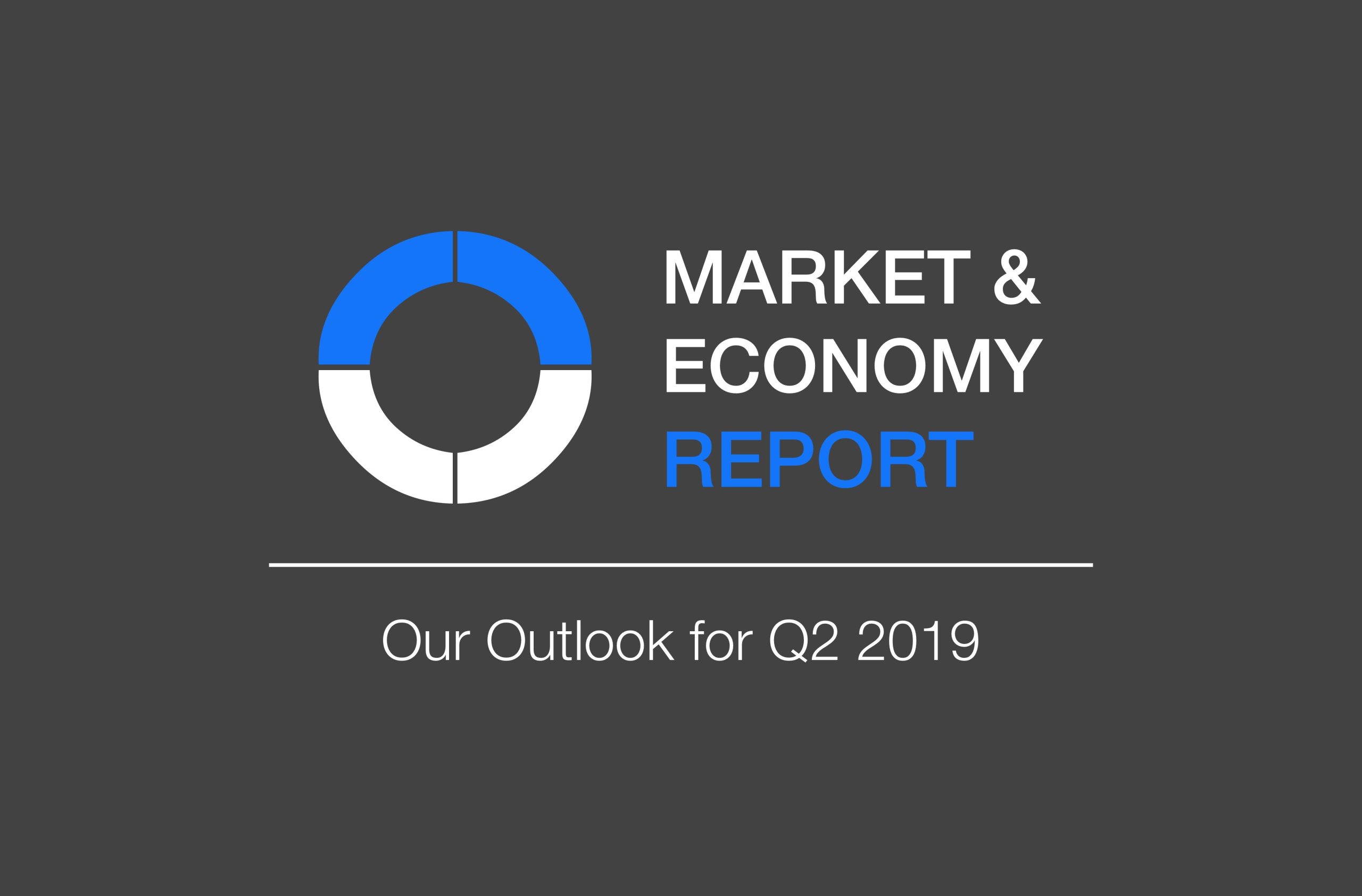
Market & Economy Report: Q2 2019
There are few better ways to welcome spring each year than by spending an afternoon at Coors Field with a rockies dog in-hand and a cold beverage within reach. It never fails that every time I’m at a baseball game, the 7th inning stretch rolls around and I’m reminded that there are two types of baseball fans:
1) the fan that strategically plans their early exit during the 8th inning in a desperate effort to stay ahead of the crowd and beat traffic.
2) the fan who will stay until the very last pitch hoping to see either a miraculous comeback or a 1-2-3 inning by the closer. Traffic and post-game headaches be damned.
I use this baseball analogy because, by all accounts, we are entering the late innings of what is likely to become the longest economic expansion in U.S. history. Having said that, the question is – what type of investor are you? Are you willing to give up the potential for some late-inning fireworks to increase your chances of a fast, safe Uber ride home – or – are you inclined to wait around until the last pitch in the bottom of the 9th hoping for a walk-off grand slam?
Thankfully, given the way that we manage portfolios at Destiny Capital, the choice isn’t necessarily binary. This isn’t an in-or-out scenario. Perhaps the most tired cliché used in this industry is “it’s time in the market, not timing the market.” Just because this phrase is cliché doesn’t mean it’s not true. Destiny Capital’s diversified, risk-based portfolios are designed to keep clients invested regardless of market conditions. However, there’s never a bad time to talk about risk. In fact, given that we are in the late stages of a prolonged expansion, this might be the perfect time to talk about risk. So, I’d like to talk about what our Investment Committee is paying attention to. In short – what concerns us and what encourages us moving forward in 2019.
The Yield Curve
When the Soothsayer in Shakespeare’s Julius Caesar proclaimed “beware the Ides of March,” who would’ve thought that he’d not only be foretelling the assassination of Caesar in 44 BC, but also the dreaded yield curve inversion in March of 2019? Granted, he was a few days off in his inversion prediction, but that can be forgiven.
The yield curve is a graph that plots the interest rate (yield) paid to treasury investors across different maturities from 3 months to 30-years. ‘Inversion’ occurs when shorter-term notes have higher yields than longer-term bonds. Typically, bonds with longer maturities offer higher yields as a reward for an investor committing funds over a longer term, thus incurring a greater risk of inflation, changes in interest rates, or even risk of default. Therefore, when inversion occurs, an investor receiving less of a reward for greater long-term risk seems counterintuitive, to say the least.
It is true that a yield curve inversion has historically been a reliable predictor of recession. This relationship is taught in every Econ class across the country. However, after first seeing the inversion in March, my question was – if the yield curve is being used as a leading indicator, then what is the time relationship between inversion and recession?
Data from Bianco Research has shown that, over the last 50 years, a recession has followed inversion by an average of 311 days. Again, that’s only an average, and the timeframe has some fairly broad fluctuations. For instance, after the 2006 inversion, the economy didn’t dip into recession for another 487 days. Conversely, the inversion in 2000 preceded the recession by only 213 days.
The bottom line is that there will be another recession at some point in the future. The timing, however, is impossible to predict with any great sense of accuracy, and it could be years before we experience an economic downturn. We like to joke around here that “economists have correctly predicted 13 of the last 5 recessions.” For any investor, the key is understanding and accepting the level of risk in your portfolio. Is it appropriate for your risk appetite and your goals? Please also keep in mind that just because the U.S. economy enters a recession does not mean that the markets will mimic what we experienced in 2008, which leads me to our next topic.
Where’s the Bubble?
Historically, recessions have been triggered by challenges in four cyclical sectors: housing, autos, inventories, and fixed business investment. According to JP Morgan Asset Management, while these four sectors only make up approximately 20% of GDP, they are responsible for 66% of the variability in GDP. In short, if you’re looking for a bubble that may trigger a recession, these are your usual suspects.
Yet, in 2019, none of these sectors are approaching bubble status. In fact, housing and autos are below historical averages while inventories and fixed business investment are at-or-slightly above historical averages. This isn’t to say that hidden bubbles (or localized microbubbles) don’t exist somewhere in this economy, but some positive news is that bubbles do not appear to be building within these historically volatile sectors.
Tariffs, Trade & Tax Cuts
It’s quite simple – financial markets do not like uncertainty. At the moment, there is no situation that is more uncertain than the trade tensions between the world’s two largest economies – the United States and China. This is not to pass judgment either way on the trading strategy of the current administration. However, think about it this way – if you were a business owner and wanted to make a significant investment in building a new facility, would you build now or take a wait-and-see approach to see what happens to, among other things, the price of aluminum and steel? Furthermore, with the U.S. economy nearly at full employment (3.8% as of March), will you even be able to find qualified workers if you do, in fact, build and expand?
Many of our business-owner clients tell us that they are facing similar questions about uncertainty in their own businesses and industries. These concerns, among other things, are impacting a broader economic slowdown in the U.S. and overseas. In fact, much of the boon offered by the recent corporate tax cuts have not focused on capital expenditures but has been used to facilitate stock buybacks, which reached historic levels in 2018 and are anticipated to be just as high, if not higher, in 2019. Stock buybacks are not necessarily a bad thing for investors, but they do not foster broad economic growth in the way that capital expenditures might.
What’s the Good News?
Despite the seemingly dark economic cloud cast by the yield curve inversion, there is still quite a bit to like about where the U.S. economy is today. Unemployment is at 3.8% and is expected to remain low vs. a 50-year average of 6.2%. Year-over-year wage growth is finally picking up after a prolonged lull and sits at 3.5% vs. being in the low 2% range for the last several years. It is growing increasingly unlikely that the Federal Reserve will raise rates again in 2019, which will allow individuals and corporations to borrow at attractive rates with the hope of spurring some additional growth. When it comes to consumer finances, household debt service is nearing all-time lows, while household net worth is nearing all-time highs. Continued record-level stock buybacks could provide some tailwinds for investors. Finally, and above all, it’s never a good idea to bet against the resiliency and ingenuity of the American economy.
How is Destiny Capital Positioning for the Future?
In recent months, the Destiny Capital Investment Committee made some significant changes to client portfolios in an effort to increase portfolio income, improve diversification, and reduce volatility. These changes are the result of months, and even years, of exhaustive research and analysis. Risk levels are increasing as this economic expansion continues, but we do not see any systemic risks that might cause a widespread breakdown in the financial markets. Our focus will remain on managing truly diversified portfolios that provide both income and strong risk-adjusted returns for our clients. We would also encourage our clients to assess their personal tolerance for risk. Think about your individual reaction to the volatility that the markets experienced in 2018, and this might help to gauge whether or not you are invested in a portfolio that is suitable for you. Just because market volatility is normal and can be a sign of a healthy market, doesn’t mean we have to like it. At Destiny Capital, you have options. We also have the people and tools that can help you understand which investment strategy is appropriate for you. As I mentioned earlier, there’s never a bad time to talk about risk.
Thank you for your continued trust. Our team is always here to support you.
Have any questions? We’re here to help!
{{cta(‘b98204c7-0e0e-4d3b-895d-e54ef00e4f97’)}}




